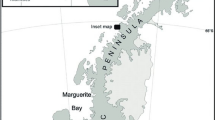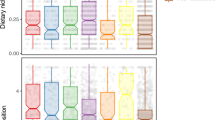Synopsis
Predator-prey data were obtained in a study of feeding ecology of land-locked alewife,Alosa pseudoharengus, in Claytor Lake, Virginia, and subjected to two indices of electivity as well as a nonparametric paired-comparisons statistical test. Values obtained from the two indices were often contradictory with each other and the statistical test. Attributes of the statistical procedure render it more appropriate than electivity indices to describe feeding selectivity in fish populations. Results of the study also demonstrated the importance of considering the size composition of zooplankton populations in prey preference studies; measures of selection were often positive for zooplankters ≥ 1.0 mm while negative for those of the same prey group < 1.0 mm length. Because numerous problems are inherent with in situ feeding selectivity studies of planktivorous fishes, selectivity determinations, regardless of methodology, should be construed in a relative rather than absolute context.
Similar content being viewed by others
References cited
Brooks, J.L. 1968. The effects of prey size selection by lake planktivores. Syst. Zool. 17: 272–291.
Chesson, J. 1978. Measuring perference in selective predation. Ecology 55: 622–629.
Confer, J.L. & P.I. Blades. 1975. Omnivorous zooplankton and planktivorous fish. Limnol. Oceanogr. 20: 571–579.
Drenner, R.W., J.R. Strickler & W.J. O'Brien. 1978. Capture probability; the role of zooplankter escape in the selective feeding of planktivorous fish. J. Fish. Res. Board Can. 35: 1370–1373.
Eggers, D.M. 1977. The nature of prey selection by planktivorous fish. Ecology. 58: 46–59.
Gabriel, W.L. 1978. Statistics of selectivity. pp. 62–66. In: S.J. Lipovsky & C.A. Simenstad (ed.) Gutshop '78: Fish Food Habits Studies, Proc. 2nd Pacific Northwest Tech. Workshop, Washington Sea Grant Publ., Washington, Seattle.
Gannon, J.E. 1976. The effects of differential digestion rates of zooplankton by alewife,Alosa pseudoharengus, on determinations of selective feeding. Trans. Amer. Fish. Soc. 105: 89–95.
Hollander, M. & D.A. Wolfe. 1973. Nonparametric statistical methods Wiley and Sons, New York. 503 pp.
Holling, C.S. 1966. The functional response of invertebrate predators to prey density. Entomol. Soc. Can. Mem. 48: 1–86.
Ivlev, V.W. 1961. Experimental ecology of the feeding of fishes. Yale Univ. Press, New Haven, Connecticut. 302 pp.
Jacobs, J. 1974. Quantitative measurement of food selection: a modification of the forage ratio and Ivlev's electivity index. Oecologia 14: 413–417.
Janssen, J. 1976. Feeding modes and prey size selection in the alewife (Alosa pseudoharengus). J. Fish. Res. Board Can. 33: 1972–1975.
Kohler, C.C. 1980. Trophic ecology of an introduced, land-locked alewife (Alosa pseudoharengus) population and assessment of alewife impact on resident sportfish and crustacean zooplankton communities in Claytor Lake, Virginia. Ph.D. Thesis, Va. Polytech. Instit. State Univ. Blacksburg. 208 pp.
Kohler, C.C. & J.J. Ney. 1981. Consequences of an alewife dieoff to the fish and zooplankton of a reservoir. Trans. Amer. Fish. Soc. 110: 360–369.
Kohler, C.C., J.J. Ney & A.A. Nigro. 1979. Compact, portable vertical gill net system. Prog. Fish-Cult. 41: 34–35.
Mellors, W.K. 1975. Selective predation of ephippialDaphnia and the resistance of ephippial eggs to digestion. Ecology 56: 974–980.
Murdoch, W.W. 1969. Switching in general predators: experiments on predator specificity and stability of prey populations. Ecol. Monogr. 39: 336–354.
Murdoch, M.W. 1971. The developmental response of predators to changes in prey density. Ecology 52: 132–137.
Murdoch, M.W., S. Avery & M.E.B. Smyth. 1975. Switching in predatory fish. Ecology 56: 1094–1105.
Oaten, A. & W.W. Murdoch. 1975. Switching, functional response, and stability in predator-prey systems. Amer. Nat. 109: 229–318.
O'Brien, W.J. 1979. The predator-prey interaction of planktivorous fish and zooplankton. Amer. Scientist 67: 572–581.
O'Brien, W.J. & G.L. Vinyard. 1974. Comment on the use of Ivlev's electivity index with planktivorous fish. J. Fish. Res. Board Can. 31: 1427–1429.
O'Brien, W.J., N.A. Slade & G.L. Vinyard. 1976. Apparent size as the determinant of prey selection by bluegill sunfish (Lepomis macrochirus). Ecology 57: 1304–1310.
Paloheimo, J.E. 1979. Indices of food type preference by a predator. J. Fish. Res. Board Can. 36: 470–473.
Pirie, W.R. & W.A. Hubert. 1977. Assumptions in statistical analysis. Trans. Amer. Fish. Soc. 106: 646–648.
Strauss, R.E. 1979. Reliability estimates for lvlev's electivity index, the forage ratio, and a proposed linear index of food selection. Trans. Amer. Fish. Soc. 108: 344–352.
Vinyard, G.L. 1980. Differential prey vulnerability and predator selectivity: effects of evasive prey on bluegill (Lepomis macrochirus) and pumpkinseed (L. gibbosus) predation. Can. J. Fish. Aquat. Sci. 37: 2294–2299.
Warshaw, S.J. 1972. Effects of alewives (Alosa pseudoharengus) on zooplankton of Lake Wonoskopomuc, Connecticut. Limnol. Oceanogr. 17: 816–825.
Werner, E.E. 1974. The fish size, prey size, handling time relation in several sunfishes and some implications. J. Fish. Res. Board Can. 31: 1531–1536.
Werner, E.E. & D.J. Hall. 1974. Optimal foraging and the size selection of prey by the bluegill sunfish (Lepomis macrochirus). Ecology 55: 1042–1052.
Windell, J.T. & S.H. Bowen. 1978. Methods for study of fish diets based on analysis of stomach contents. pp. 219–226. In: T. Bagenal (ed.) Methods For Assessment of Fish Production In Fresh Water, 3rd edition, Blackwell Scientific Publ., London.
Zaret, T.M. 1972. Predators, invisible prey, and the nature of polymorphism in the cladocera (Class Crustacea). Limnol. Oceanogr. 17: 171–184.
Zaret, T.M. 1980. Predation and freshwater communities. Yale University Press, New Haven. 187 pp.
Zaret, T.M. & W.C. Kerfoot. 1975. Fish predation onBasmina longirostris: body-size selection versus visibility selection. Ecology 56: 223–237.
Author information
Authors and Affiliations
Rights and permissions
About this article
Cite this article
Kohler, C.C., Ney, J.J. A comparison of methods for quantitative analysis of feeding selection of fishes. Environ Biol Fish 7, 363–368 (1982). https://doi.org/10.1007/BF00005571
Received:
Accepted:
Issue Date:
DOI: https://doi.org/10.1007/BF00005571




